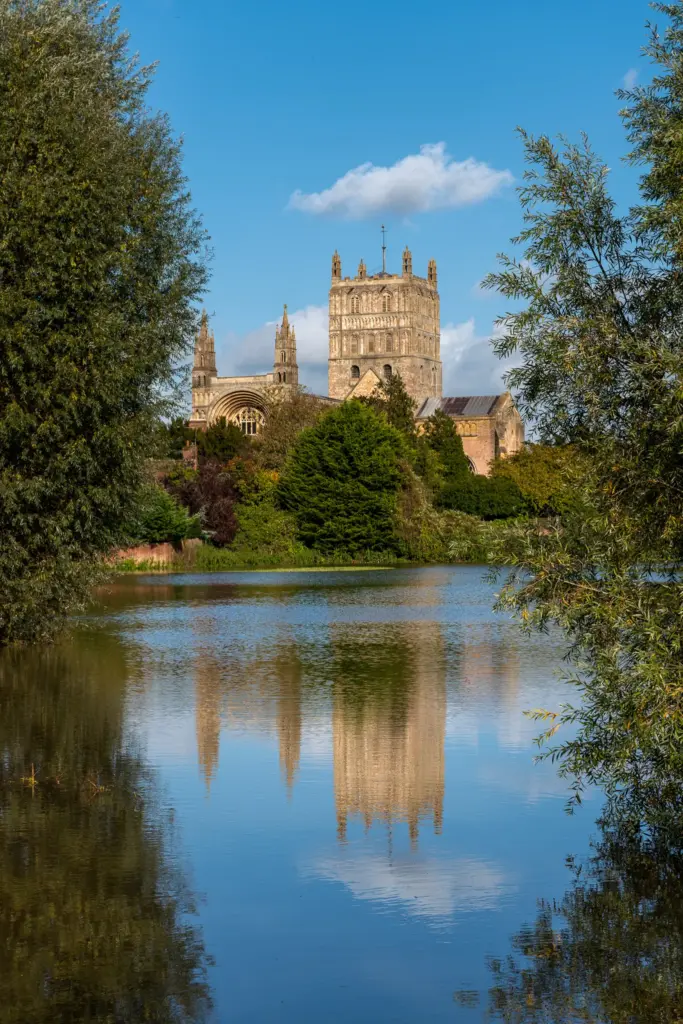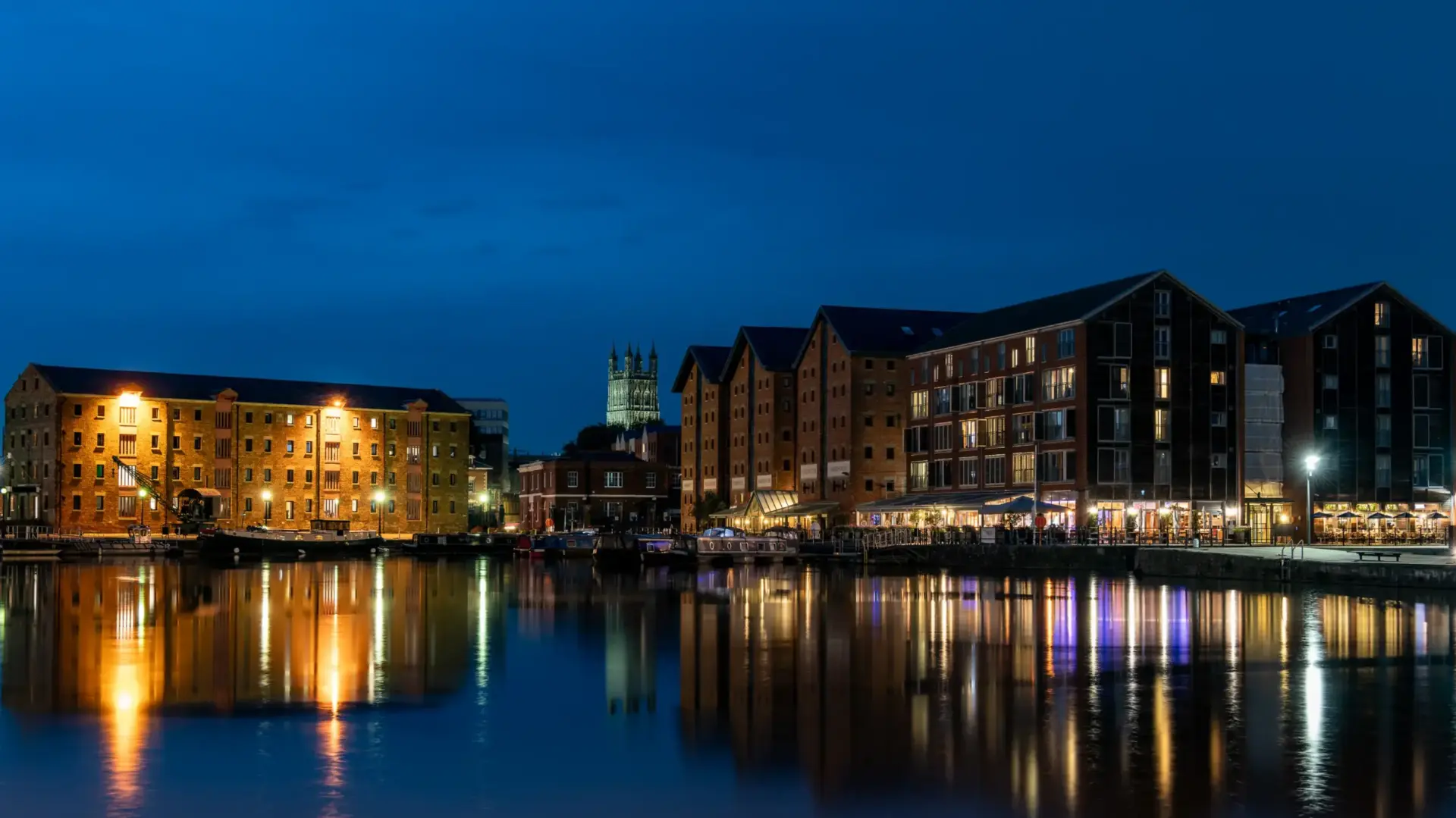Photography is a powerful tool to freeze moments in time, and when done thoughtfully, it can elevate a subject’s natural beauty into something truly extraordinary. The photograph of Tewkesbury Abbey taken in October 2024 exemplifies this concept through its striking use of reflection, symmetry, and technical precision. Shot with a Nikon D850 using ISO 64, 70mm, f/8.0, and 1/200 second shutter speed, this image is a case study in careful planning and execution.

The Scene and Inspiration
Tewkesbury Abbey, with its gothic architecture and serene surroundings, offers photographers countless possibilities for creating impactful compositions. This particular shot captures the abbey’s grandeur framed by vibrant autumn foliage and mirrored flawlessly in the still water below. The reflection adds depth and symmetry, making the image not just a straightforward representation of the landmark, but an artistic interpretation of its setting.
The decision to feature the reflection was intentional. Reflections naturally draw the viewer’s eye, adding visual interest and creating a sense of calm and balance. The stillness of the water in this image amplifies the scene’s tranquility, while the symmetrical composition enhances its timeless quality.
Equipment and Preparation
The Nikon D850 was the ideal tool for this shot. With its 45.7-megapixel full-frame sensor, it offers incredible detail and dynamic range. This level of resolution is essential for capturing the fine architectural details of the abbey, the textures of the surrounding foliage, and the subtle gradients in the reflection.
Photography in natural light often requires optimal timing. Taken on a clear October day, the lighting was soft and even, likely captured during the golden hour. This timing allowed the photographer to avoid harsh shadows while enhancing the warmth of the stone facade and the richness of the surrounding environment.
Dissecting the Camera Settings
Each setting in this photo’s EXIF data was a deliberate choice to achieve balance, detail, and sharpness:
- ISO 64: Selecting ISO 64 not only minimizes noise but also maximizes dynamic range on the Nikon D850. This setting was critical for rendering the intricate details of the abbey and its reflection without introducing unwanted grain or overblown highlights in the bright sky.
- 70mm Focal Length: With the lens set at 70mm, the composition benefits from a perspective that feels natural yet slightly compressed. This focal length brings the abbey into focus as the primary subject while still incorporating enough of the surrounding environment for context. It creates a balance between intimacy and grandeur.
- Aperture f/8.0: The choice of f/8.0 strikes a perfect balance between depth of field and sharpness. Most lenses perform optimally around f/8.0, ensuring edge-to-edge clarity in the image. The aperture also provides sufficient depth of field to ensure both the abbey and its reflection remain in crisp focus.
- Shutter Speed 1/200 Sec: At 1/200 second, the photographer eliminated the risk of motion blur, which could arise from subtle ripples in the water or handheld camera shake. This speed, combined with ISO 64 and the aperture setting, ensured the photo achieved its proper exposure while maintaining sharpness.
The Role of Reflection in the Composition
One of the most captivating aspects of this image is its flawless use of reflection. By incorporating the abbey’s mirror image in the water, the photographer doubled the visual impact of the scene. The reflection not only creates symmetry but also enhances the foreground, providing a unique perspective that complements the primary subject.
To emphasize the reflection, the photographer likely crouched lower to the ground or used a tripod at a lower angle. This viewpoint maximized the reflection’s presence in the frame, drawing the viewer’s eye from the base of the image to the abbey and into the sky above. The calm water was instrumental here, acting as a natural mirror to create a pristine and undisturbed reflection.
Final Thoughts
This photograph of Tewkesbury Abbey serves as a masterclass in thoughtful photography. By combining technical expertise with compositional creativity, the photographer transformed a historic landmark into a timeless piece of art. Each element of the photo—from the chosen settings to the use of natural reflections—is a testament to the importance of planning and precision in photography.
For those looking to replicate or take inspiration from this shot, consider scouting locations with reflective surfaces like water or glass, and pay close attention to how light interacts with your subject. Experiment with your aperture, ISO, and focal length to find the perfect balance for your composition. With patience and practice, you, too, can create images that capture the essence of a scene with clarity and artistry.

